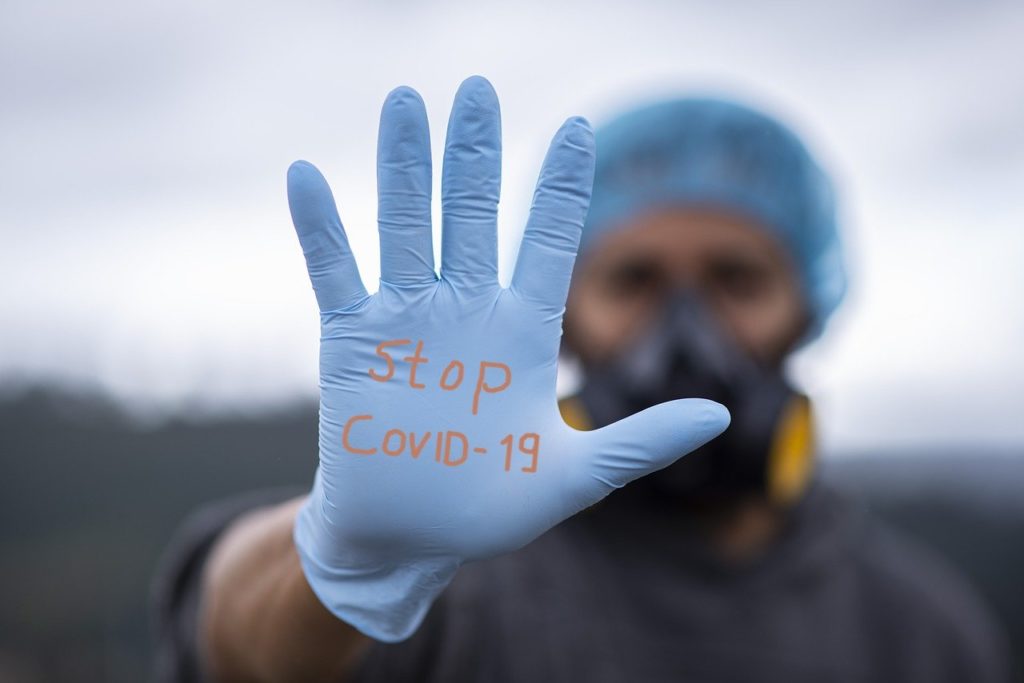An Update on COVID-19 in Mexico Posted by sasha on Jan 19, 2021 in Uncategorized
Here we are in 2021, yet we’re still talking about COVID-19. A phrase that’s often heard and is even printed on t-shirts in my home of Puerto Vallarta, Mexico is “Pinche COVID!” (F***ing COVID!). While I wish this post could be on my usual topics of holidays, food, or travel, I’m going to give an update on COVID-19 in Mexico.
Across Mexico, COVID cases have been surging recently. There have now been several days in a row where overall new cases crossed the 20,000 mark. The surging numbers have been blamed on several things – fiestas navideñas y corporativas, se incrementó la interacción social e intradomiciliaria (Christmas and corporate parties, increased social and home interaction).
This is being called “la segunda ola” (the second wave) of COVID-19. In total, Mexico has had over 1.6 million cases and 140,000 deaths. As the testing rate is quite low, it’s believed that this number is actually closer to 200,000.
Mexico has been using a semáforo (traffic light) system to identify the severity of the situation across the country. It actually uses four colors – red, orange, yellow, and green. Just today, the number of states listed as semáforo rojo (red light) doubled from five to ten.
There are currently 19 states colored orange on the map, with 17 of them at high risk of soon turning red. Only one lone state – Campeche – is green. The situation is especially dire in Mexico City, where 88% of hospital beds for COVID patients are currently occupied. For the total country, that number is around 60%.
“A Year of COVID in Mexico” from Al Jazeera.
I live in the state of Jalisco, which is one of those five that turned red today. Just a few days ago, the governor once again hit el botón de emergencia (the emergency button). These are the indicators used for hitting the emergency button:
- Si la saturación del sistema hospitalario llega al 50% (If the saturation of the hospital system reaches 50%).
- Si la tasa de incidencia semanal por fecha de inicio de síntomas alcanza los 400 casos (If the weekly incidence rate by symptom onset date reaches 400 cases).
From January 16-31, many restrictions are in place here as well as in our neighboring state of Nayarit. Anyone who can do their work remotely must do so in these two weeks, and any activities that generate a crowd are shut down. Las personas mayores de 60 años deberán permanecer en casa (People over the age of 60 must stay home).
El Gobernador de Jalisco anunció el cierre de bares, antros, salones de eventos, cines, teatros, museos y casinos, mientras que los restaurantes podrán operar hasta las diez de la noche (The Governor of Jalisco announced the closure of bars, clubs, event rooms, cinemas, theaters, museums and casinos, while restaurants will be able to operate until ten at night).
The governor’s office put out a statement that began: No podemos esperar más: es ahora cuando nuestro estado y su personal médico necesitan de la corresponsabilidad de todas y todos (We cannot wait any longer: it’s now that our state and its medical personnel need the co-responsibility of each and everyone). Let’s hope that everyone takes it seriously this time, as one reason for the surging numbers was listed as “falta de apego a las medidas sanitarias y relajamiento de estas” (lack of adherence to sanitary measures and relaxation of these).
All over the country, people are being encouraged now more than ever to #QuedateEnCasa (Stay at Home). People are being reminded of the methods to prevent the spread of COVID-19 with signs all over the city instructing people to “lava tus manos con agua y jabón” (wash your hands with soap and water), “usar un cubrebocas” (wear a mask), and “mantener la sana distancia” (maintain social distance).
A creative way that Mexico has been encouraging social distancing is with the use of a superhero called Susana Distancia. It’s a play on words, as “su sana distancia” means “your healthy distance.” That’s the phrase they’ve gone with in many ad campaigns instead of the more direct translation distanciamiento social. Just take a look at one of the video ads that features her. It’s a quick and relatively easy exercise for Spanish listening and reading!
There is some positive news with the rollout of la vacuna (the vaccine) here to healthcare workers. However, President Andrés Manuel López Obrador recently announced that Mexico will accept a delay in more shipments of the Pfizer vaccine in order to send more doses to poorer countries. He did his best to ensure an uneasy population by saying ““Ya vamos a tener vacunas suficientes” (We’re going to have enough vaccines).
Personally, I feel safer here in Mexico than I would back in the US at the moment. I’m definitely fortunate to be a younger person in good health who can work from home. In general, I find most people here in Puerto Vallarta are wearing masks when social distancing isn’t possible, for example when riding the bus. Stores requires masks and always take your temperature. Many restaurants here are open-air and they’ve reduced capacity as well. I hope that hitting the emergency button will help to stabilize the numbers and look forward to the day when we can stop saying “la nueva normalidad” (the new normal). In the meantime, it’s up to all of us as individuals to do our part to stop the spread of pinche COVID!

Build vocabulary, practice pronunciation, and more with Transparent Language Online. Available anytime, anywhere, on any device.




